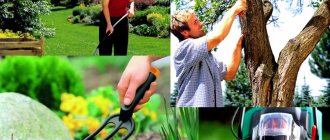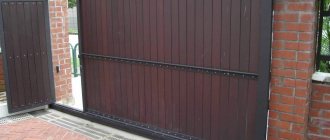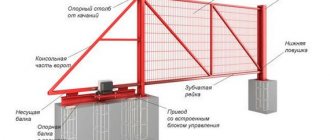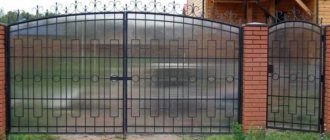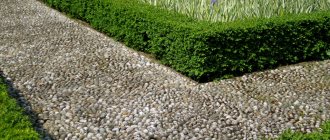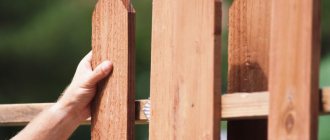Secateurs are hand-held garden tools that are used to trim branches (which have an average diameter of about 2 cm) and shoots. It is used when forming or thinning the canopies of trees and shrubs. Secateurs are also used for harvesting grapes.
The question of choosing this gardening tool sooner or later arises before any gardener. And this choice is always difficult, because there are too many varieties. Before choosing a specific model of pruning shears, you need to be thoroughly familiar with their main types and models.
Journalists from "Farm Expert" selected models of pruning shears that have proven themselves well among experienced gardeners. For the convenience of our readers, pruners have been presented as a list of the best among those available in stores.
Purpose and advantages
Even novice gardeners know the need to regularly trim trees and shrubs in their garden. This way you can form the correct crown in a timely manner, regulate its growth, size and shape.
As a result, fruiting increases and the harvesting procedure is greatly simplified. An ordinary garden pruner is an indispensable assistant in this matter.
These devices can be of various types, which allows for high-quality pruning of young trees and giving shrubs the most bizarre decorative shape. With their help, you can quickly thin out the crown, eliminating excessive density, which harms the future harvest and visibility on the site.
Diseased or dead branches are also effectively removed. If you grow flowers for sale or just to decorate your home, then with this tool you can easily cut beautiful buds. It is also used when caring for grapevines, in the process of regulating the length of the root system, and for cutting cuttings.
A high-quality unit allows you to trim branches with minimal effort, and the cuts themselves should be smooth and clean. Torn edges should not be created at the cutting site, as this often leads to plant diseases. When choosing, you need to pay attention to the strength and reliability of the structure.
All the variety of models can be seen in the photo of the garden pruner. The standard design includes the following components:
- support knife;
- working version of the cutting blade;
- spring;
- fastening axis with bolt and nut;
- lock or latch;
- handles.
Components of pruning shears
As you may have guessed, the pruning shears do not have a whole set of elements.
The base sector consists of:
- Blade (working) – it is worth noting that this is one of the main parts. The blade is quite sharp and hard, which allows you to cut the necessary material evenly without injuring the remaining part of the plant. Keep in mind that the blade may become dull, so it will need to be sharpened over time.
- Blade (support) - this element is not sharp, since it is created for support - so that the plant juice does not create sticking in the pruner.
- Two handles - the handles are made from a certain material and always have the geometry of a human hand for convenient use. The material is preferably elastic, so as not to damage the skin of human hands.
All these elements are connected in a cross to each other, which is why they are very similar to scissors. The only difference is the spring added there for elasticity of movement.
Also, it is worth noting that some models have a kind of safety lock that helps keep the pruner in the closed position if you are not using it.
Main types and their applicability
Depending on the characteristics of the cutting blade, planar and contact designs are distinguished. Flat pruning shears have straight cutting components. It is effectively used for thinning young plants and trimming branches.
Equipped with two blades - a cutting knife and a counter knife - ensures a neat cut shape. The knives are pressed into the branch without strong compression and with minimal damage to the wood.
The contact design is more suitable for cutting hard or dry wood. This is possible thanks to the presence of one knife and stop. The cutting plane penetrates the tree, and the stop ensures that the branch is secured and pressure is distributed evenly along the cut line without causing splitting.
The task you set for yourself when carrying out gardening work determines your choice. If you need to process annual or perennial trees and shrubs, then the flat type is suitable for you. For curly and shaping plant haircuts, it is better to choose the contact option.
When using garden equipment, you need to do it correctly - you should not injure yourself or the plant. If the model you are using has two cutting surfaces, then you can hold it in any way.
When you prune young plants with a flat model, it is advisable to place it perpendicular to the branch. But if it is thick, then this action must be performed at an angle, which will significantly simplify the task.
The contact tool should be oriented towards the root to prevent injury to the tree or bush. Pointing a sharp blade towards the root will not cause the stem to split.
Scope of application of pruners
Secateurs are one of the indispensable tools for the garden, especially the garden. The main purpose is to trim branches and bushes.
This is done for two purposes:
- Change of season - some plants require pruning in the fall or before winter, and pruning shears are an irreplaceable thing.
- Sanitary pruning – sometimes plants can be damaged by pests or infested, so pruning shears will do the job perfectly.
Secateurs are often used together with bush shears, and some gardeners even argue that these two elements cannot be replaced by anything.
Types of pruners
Secateurs have a variety of purposes, so it is necessary to study all types and their purpose in order to avoid incorrect use.
Let's look at the most popular types:
- The bypass pruner is a fairly classic tool, which is why it is often used for cutting living plants. Due to its correctly positioned blades, only the cut part of the plant is damaged.
- Contact pruning shears - the model is similar to the previous one. Designed for cutting dry branches. The handles of such a tool are curved, and the cutting part rests against the recess of the supporting blade.
- Pruning shears – this model is designed for cutting branches that are not very thick. It consists of two parallel blades. The tool looks like scissors.
- Floral pruning shears - designed for cutting thin shoots of flowers, usually used for pruning annual plants.
- Standard - a basic tool, both handles move simultaneously; the model has a spring that creates elasticity of movement. Used for pruning thin branches. Of course, with such pruning shears you can cut not only mesh, but also herbal plants, the only drawback is that the blade is not coated with a special coating that can protect the blades from sticking. Therefore, before choosing such a pruner, decide exactly what plants you will use it for.
- Reversible - it’s quite easy to understand how such a tool works, since the mechanism is called reverse.
- Secateurs with a protective arc - the arc protects your hands from damage.
Secateurs with an anti-stick blade - a special coating is applied to the blade, which does not allow the accumulation of juices from cut plants. This model is purchased for cutting mainly plants that release sap.
Types and their features
An important characteristic of the garden tool in question is the pruning mechanism. Its features determine how easy it is to manipulate it and what plants can be trimmed.
How to choose a piston compressorIn what cases is washing machine repair needed, what should everyone know?
Do-it-yourself wood splitter - drawings, diagrams, dimensions. 120 photos of homemade wood splitters
Tip #1. Try several options before you buy
Before going to a retail outlet, it makes sense to try out different versions of pruning shears and evaluate the advantages of each of them. For example, recently ratchet pruners, which have become quite popular, will not be convenient for everyone.
Due to the large number of times the handles are squeezed to obtain one cut, your hands become very tired and an uneven cut is obtained.
It is for this reason that it is recommended to try out different types of pruning shears before going to the store. After cutting several branches with different types of pruning shears, you will immediately decide on your choice.
When choosing, it would not be superfluous to pay attention to the durability of one or another pruner mechanism, since some are able to work much longer than others - experienced gardeners, and perhaps sellers, will be happy to give advice on operating experience.
Gardening scissors
They have two cutting surfaces similar to ordinary household scissors. The design allows you to make smoother cuts. But if thicker and denser stems are processed, the plant tissue will be severely compressed.
In this regard, professionals suggest choosing flowers and young plants with a diameter of 15-20 mm for cutting work.
Comparative table of products from the rating
| Name | View | type of drive | MAX cutting diameter, mm | Weight, kg | Price, rubles |
| Secateurs FISKARS PowerGear L РХ94 | planar | power | 26 | 0,24 | 3570 |
| Secateurs Mr.Logo 16740 | contact | ratchet | 24 | 0,24 | 1100 |
| Secateurs FISKARS SingleStep Р26 1000567 | planar | spring | 22 | 0,2 | 800 |
| Secateurs GARDENA B/S 8854-20 | planar | spring | 20 | 0,2 | 800 |
| Secateurs GARDENA B/S-XL 8905-20 | planar | lever | 22 | 0,3 | 2300 |
| Secateurs FISKARS SingleStep P25 1000564 | contact | spring | 22 | 0,19 | 1100 |
| Secateur Sibrteh 60495 | planar | spring | 15 | 0,2 | 400 |
| Secateurs Center tool titanium contact 0233 | contact | ratchet | 30 | 0,23 | 700 |
| Secateurs PALISAD 60503 | planar | spring | 15 | 0,14 | 300 |
| Secateurs SAMURAI IPSRC-55TA | contact | ratchet | 15 | 0,3 | 1000 |
| Secateurs Whirlwind 73/7/3/2 | contact | spring | 15 | 0,2 | 345 |
| Garden pruning shears GARDENA B/SM 8853-30 | planar | spring | 22 | 0,1 | 900 |
View the comparison table as a Google document
Outline view
They have one convex cutting surface. The second part is shifted relative to it and acts as a stop. When a working operation occurs, the cutting element moves along the stem along the stop.
The tool must be taken so that the main part is oriented towards the branch. In this case, the base will not deteriorate, but the cut section will be deformed.
This option is suitable for adjusting growing branches and for grafting operations. But you need to choose those products that do not have a gap between the blades. Otherwise, you won’t be able to get a high-quality cut. The branch will collapse under pressure.
Septic tank Topas - detailed review and description of technical characteristicsPetrol mower repair: overview of faults and effective methods for solving them. Photo instructions from the pros!
- Garden composter - which one to choose? Review of the best views for a summer residence (100 photos)
Evaluate the strength of the blades
It directly affects durability. It is good if the cutting parts are made of strong and hard (hardened) steel: soft steel can wrap even after the first use and quickly becomes dull. It must be remembered that composite elements are less durable than solid ones, because during operation the pruner experiences greater mechanical stress. For myself, I excluded pruners with steel cutting pads, since they do not withstand intensive work for long. But for amateur gardeners whose annual pruning volume is small, they may be suitable.
Device with an anvil
The action of the tool is based not on cutting, but on chopping, as in the guillotine. A sharp blade connects to a wide support - an anvil - and splits the stem. If the cutting blade is metal, then soft materials, such as plastic, are used to finish the stop. This way you will be able to successfully trim and not damage the blade when it touches the anvil.
The presence of this support platform will help to effectively and quickly trim thick and dry branches when sanitizing trees and shrubs in the garden. Stems up to 30 mm in diameter are susceptible to exposure.
Ratchet Models
Thanks to the presence of a spring that returns to its original position after pressing, you can trim thicker branches without applying much effort.
Ratchet pruners provide an even and smooth cutting surface due to the fact that the cutting blade itself remains motionless when the spring returns. But much more time is spent processing green and dry branches than when using other types of equipment.
Smooth blades are better
Any grooves, scratches or bumps on the cutting parts increase friction, make cutting more difficult and make wounds worse. The cutting parts must be well polished. Some models have Teflon coating applied to the blades, which improves glide and protects the metal from corrosion.
The blades of the new pruning shears must be absolutely smooth, without any defects.
Features of the tool for various types of work
Depending on what you will be trimming in your garden, the appropriate tool is selected. After all, you may need both a sharp compact and a large pruner.
Garden shears are more suitable for florists. The flat structure makes it easy to trim soft fabric, flower stems, twine and decorative elements.
But when pruning roses you will have to work hard. The bushes contain both young shoots and harder and drier shoots. To trim the former, a planar type device is required, and for the latter, a contact device with a ratchet or power mechanism is required. The presence of a holder will help avoid punctures from thorns.
To process grapevines, you need to stock up on tools of three designs:
- A flat unit for summer manipulations.
- Contact equipment for spring and autumn pruning. This type will help you carefully care for the vine without splitting or injuring it. It is desirable to have a power or ratchet mechanism.
- Lopper for thick old stems.
Perennial shrubs should be treated with a contact type device. A flat telescopic pruner is useful for curly haircuts.
It is better to shape the crown of trees with the help of loppers, which lend themselves to thicker wood. Thanks to the planar type of construction, they can easily cut living branches, but dry branches are cut with a contact model. It is advisable to have a power component. Secateurs with long handles will help you reach even the crown.
Introduction
It is very convenient if the pruning shears have brightly colored handles, since small garden tools are often lost, and the bright color allows you to find them faster
Review monitoring shows that gardeners evaluate the quality of pruning shears based on the following parameters:
- sharpness and smoothness of blades
- steel strength and sharpening durability
- presence of a protective coating on the blades
- ease of blade movement
- reliable ratchet, spring or belt drive
- reliable latch
- comfortable handles
How to choose correctly
When choosing a convenient and high-quality model, pay attention to the following factors:
The condition of the blade and its level of sharpening. High-quality samples are made of hardened steel. They resist corrosion and do not require sharpening for a long time.
The ratchet mechanism helps ease effort and reduce fatigue because it begins to operate when the level of pressure on the material is reduced.
The material from which the handles are made determines the ergonomics of the equipment. It is not recommended to take products with holders made of pure plastic. Rubberized inserts are required.
Equipment with polyamide handles with fiberglass reinforcement, as well as aluminum handles with rubber linings, have proven themselves well.
The rotating mechanism of the lower handle reduces hand friction and reduces stress during operation.
The quality of the springs determines the ease of movement of the blades. Compared to the spiral type, tape springs are considered more successful. The return spring is characterized by greater durability.
The presence of Teflon treatment or a chrome layer on the blades eliminates the phenomenon of sticking due to juice or other contaminants getting on them.
Brand and manufacturer. Using this parameter, you can choose any option you like. But such proven brands as RACO, Gardena, Fiskars, Felco, Brigadier, ARS, Tsentroinstrument, Berger are characterized by popularity.
Using a garden tool makes life much easier for any experienced or novice gardener. Processing trees and shrubs is not a very simple task. Therefore, you will definitely need this effective and productive assistant when regularly pruning plants or when trimming hedges.
Pens
Responsible for ease of use. The most common options are metal, reinforced polyamide or plastic.
Metal ones are stronger. Such an element is often equipped with rubberized inserts so that the device does not slip out of your hands.
Plastic analogues also have rubber fragments. However, such parts often break and require careful handling because they can crack from impact. Polyamide options are much more solid than plastic, and therefore more preferable.
The shape of the handles must also be such as to minimize slipping. To do this, various protrusions for fingers and other irregularities are made on them. However, excessive “lumpyness” will interfere with long-term use, as it will put pressure and rub the palms. Some models have a ring handle to ensure you don't drop the item.
There are products with rotating handles - this is very convenient and allows you to reach vegetation in hard-to-reach places.
The bright color of the handles will help you not to lose the device in the grass.

